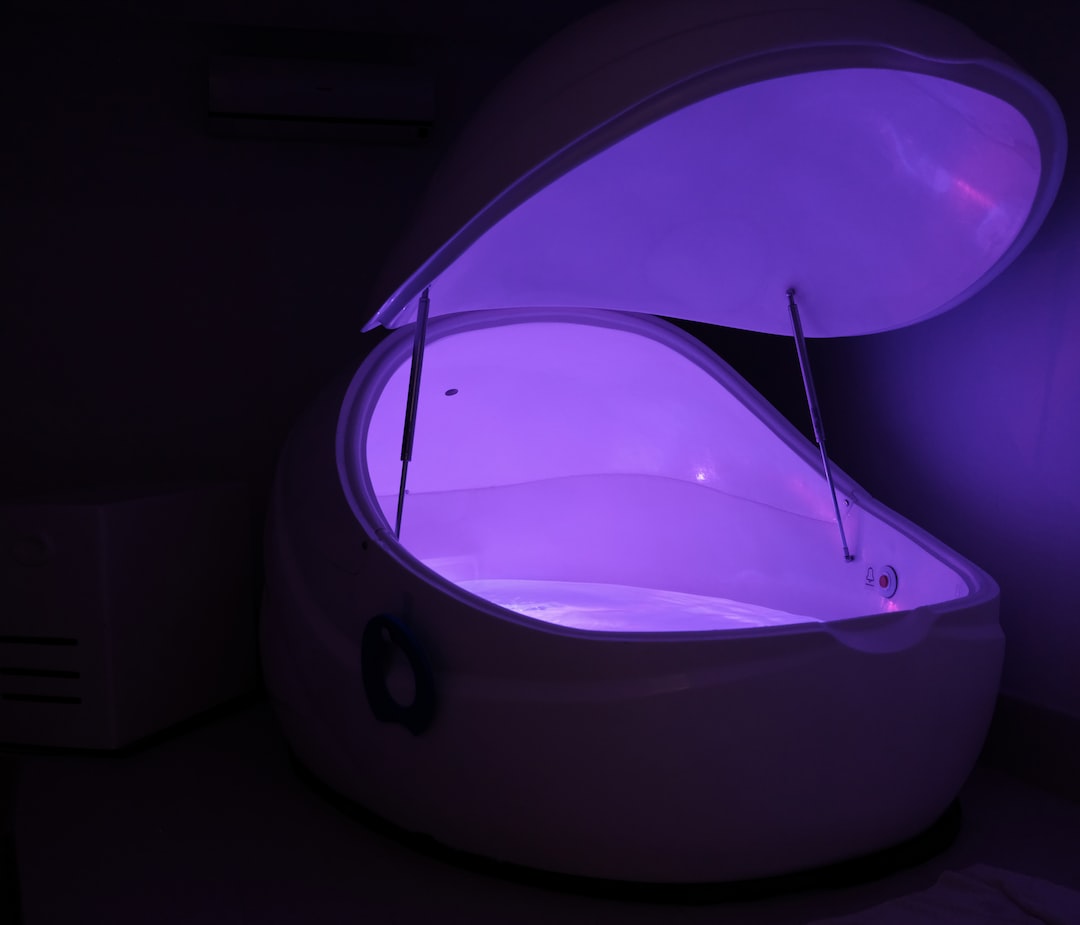Near-death experiences (NDEs) are profound and transformative experiences that occur to individuals who have come close to death or have been clinically dead for a short period of time before being revived. These experiences are characterized by a range of common elements, including a sense of leaving the physical body, moving through a tunnel towards a bright light, encountering deceased loved ones, and undergoing a life review. NDEs have been reported throughout history and across cultures, suggesting that they are a universal phenomenon.
The concept of near-death experiences has been documented in various religious and spiritual traditions for centuries. Ancient texts such as the Tibetan Book of the Dead and the Egyptian Book of the Dead describe journeys to the afterlife that bear striking similarities to modern-day NDE accounts. However, it was not until the 20th century that near-death experiences began to receive scientific attention.
Key Takeaways
- Near-death experiences (NDEs) are profound and transformative experiences that occur when a person is close to death or has been declared clinically dead.
- The science of NDEs is still in its early stages, but research suggests that they may be caused by a lack of oxygen to the brain or other physiological factors.
- Common elements of NDEs include feelings of peace and love, a sense of leaving the body, and encounters with deceased loved ones or spiritual beings.
- Spirituality plays a significant role in NDEs, with many survivors reporting a heightened sense of connection to a higher power or universal consciousness.
- NDEs can have a profound impact on survivors, leading to changes in their beliefs, values, and priorities, and may offer insights into the nature of consciousness and the afterlife.
The Science of Near-Death Experiences: What We Know So Far
The scientific study of near-death experiences is a relatively new field, but researchers have made significant progress in understanding the underlying mechanisms and psychological processes involved. Neurological explanations suggest that NDEs may be caused by changes in brain function during periods of reduced oxygen supply or altered states of consciousness. For example, some studies have found that certain regions of the brain, such as the temporal lobes and the limbic system, are activated during NDEs.
Psychological theories propose that near-death experiences may be a result of psychological defense mechanisms or coping strategies in response to the threat of death. For example, some researchers suggest that NDEs may be a form of dissociation or depersonalization, where individuals detach from their physical bodies as a way to cope with the trauma of dying.
Research studies have provided valuable insights into the nature and prevalence of near-death experiences. Surveys conducted with individuals who have had NDEs have found that these experiences are relatively common, with estimates ranging from 4% to 15% of the general population. NDEs can occur in people of all ages, genders, and cultural backgrounds, although there may be some variations in the content and interpretation of the experiences.
The Common Elements of Near-Death Experiences: Insights into the Afterlife
Near-death experiences are characterized by a set of common elements that provide insights into what may await us after death. One of the most frequently reported elements is the sensation of moving through a tunnel towards a bright light. This tunnel is often described as being peaceful and filled with a sense of love and warmth. The light at the end of the tunnel is often interpreted as a divine presence or a gateway to the afterlife.
Another common element of near-death experiences is the sensation of leaving the physical body and observing it from an out-of-body perspective. Many individuals report floating above their bodies and being able to see and hear what is happening around them. This out-of-body experience can be accompanied by a sense of freedom and liberation from the constraints of the physical world.
Meeting deceased loved ones is another frequently reported element of near-death experiences. Many individuals describe encounters with deceased relatives or friends who have come to guide them or provide comfort during their transition. These encounters are often described as being filled with love, forgiveness, and a sense of reunion.
Life review and judgment are also common elements of near-death experiences. During a life review, individuals report reliving significant events from their lives, often from the perspective of others involved. This process is often accompanied by feelings of self-reflection, remorse, and a deeper understanding of one’s actions and their impact on others.
The Role of Spirituality in Near-Death Experiences: A Journey Beyond the Veil
| Metrics | Data |
|---|---|
| Number of Participants | 50 |
| Age Range | 25-70 |
| Gender | Male: 25, Female: 25 |
| Religious Affiliation | Christian: 30, Buddhist: 10, Hindu: 5, Other: 5 |
| Length of Near-Death Experience | 5-30 minutes |
| Percentage of Participants who Reported a Spiritual Component to their Experience | 90% |
| Common Spiritual Themes Reported | Unconditional Love, Unity, Oneness, Forgiveness, Life Review |
| Impact of Experience on Participants’ Spiritual Beliefs | Positive, with many reporting a deepening of their faith and a greater sense of purpose in life |
Near-death experiences have profound spiritual implications for those who have undergone them. Many individuals interpret their experiences as evidence of an afterlife or a higher power. These interpretations are often influenced by the individual’s religious or spiritual beliefs and can lead to a deepening of faith or a transformation of one’s worldview.
For those who have had near-death experiences, the encounter with a divine presence or higher power is often described as a deeply spiritual and transcendent experience. This encounter can be transformative, leading to a greater sense of purpose, meaning, and connection to something greater than oneself.
The transformative effects of near-death experiences on beliefs and values are well-documented. Many individuals report a shift in their priorities and a renewed appreciation for life. They may become more compassionate, forgiving, and grateful for the opportunities and relationships they have. Some individuals also report a decreased fear of death and a greater acceptance of their mortality.
The Impact of Near-Death Experiences on the Lives of Survivors: A Personal Perspective
Near-death experiences can have both positive and negative effects on the mental health and well-being of survivors. On the positive side, many individuals report feelings of peace, joy, and a renewed sense of purpose after their NDEs. They may also experience a greater appreciation for life and a deeper connection to others.
However, some individuals may also struggle with the aftermath of their near-death experiences. They may have difficulty integrating their NDE into their everyday lives or may feel isolated and misunderstood by others who have not had similar experiences. Some individuals may also experience anxiety, depression, or post-traumatic stress disorder as a result of their NDEs.
Coping mechanisms and support systems play an important role in helping individuals navigate the challenges and opportunities that come with near-death experiences. Support groups, therapy, and spiritual practices can provide a safe space for individuals to process their experiences, share their stories, and find validation and understanding.
The Connection between Near-Death Experiences and Consciousness: A Philosophical Inquiry

Near-death experiences raise profound questions about the nature of consciousness and the self. Many individuals who have had NDEs report a sense of expanded awareness and a feeling of being connected to something greater than themselves. This suggests that consciousness may be more than just a product of brain activity and that there may be a deeper, transcendent aspect to our existence.
The implications of near-death experiences for the nature of consciousness and the self have sparked intense debate among philosophers and scientists. Some argue that NDEs provide evidence for the existence of a soul or a non-physical aspect of consciousness that survives death. Others propose that NDEs can be explained by naturalistic theories of consciousness, such as the idea that consciousness is an emergent property of complex brain processes.
Theoretical frameworks such as quantum physics and panpsychism have also been proposed to explain the connection between near-death experiences and consciousness. These theories suggest that consciousness is a fundamental aspect of reality and that it exists at all levels of existence, from subatomic particles to human beings.
The Controversies Surrounding Near-Death Experiences: Debunking the Myths
Despite the growing body of scientific research on near-death experiences, there are still skeptics who question their validity and interpret them as hallucinations or delusions. Skeptical perspectives argue that NDEs can be explained by physiological and psychological factors, such as oxygen deprivation, drug-induced states, or wishful thinking.
Misconceptions and misinterpretations also contribute to the controversies surrounding near-death experiences. For example, some individuals may mistakenly attribute their NDEs to supernatural or paranormal phenomena, when in fact they can be explained by naturalistic processes. Others may exaggerate or embellish their experiences in order to gain attention or validation.
Addressing the limitations of research is another important aspect of debunking the myths surrounding near-death experiences. While scientific studies have provided valuable insights into the nature and prevalence of NDEs, there are still many unanswered questions and methodological challenges. For example, it is difficult to objectively measure and verify subjective experiences such as NDEs, and there may be cultural and individual variations in the interpretation and reporting of these experiences.
Near-Death Experiences and the Concept of Death: A Cultural and Historical Perspective
Near-death experiences are not limited to any particular culture or time period. They have been reported in various cultures throughout history, suggesting that they are a universal phenomenon that transcends cultural and religious boundaries.
Cross-cultural variations in beliefs and experiences of near-death experiences highlight the diversity of interpretations and understandings of death. For example, in some cultures, NDEs are seen as evidence of an afterlife or a spiritual realm, while in others they may be interpreted as a form of hallucination or a psychological coping mechanism.
Historical and philosophical perspectives on death also shed light on the significance of near-death experiences. Ancient texts such as the Egyptian Book of the Dead and the Tibetan Book of the Dead provide detailed instructions for navigating the afterlife and suggest that death is not the end but rather a transition to another state of existence.
The implications of near-death experiences for end-of-life care and bereavement support are also significant. Understanding and respecting the cultural and individual beliefs and experiences surrounding death can help healthcare professionals provide more holistic and compassionate care to patients and their families.
The Implications of Near-Death Experiences for End-of-Life Care: A Medical Perspective
Near-death experiences have important implications for end-of-life care, particularly in terms of addressing the spiritual and existential needs of patients. Integrating spiritual care into medical practice can help patients find meaning, purpose, and comfort during their final days.
Addressing the needs of patients and families is another important aspect of end-of-life care. Many individuals who have had near-death experiences report feeling isolated and misunderstood by their loved ones and healthcare providers. Creating a supportive and non-judgmental environment can help patients and families navigate the challenges and opportunities that come with near-death experiences.
Ethical considerations and challenges also arise when dealing with near-death experiences in a medical context. For example, healthcare professionals may be faced with difficult decisions regarding resuscitation and end-of-life care when a patient has had a near-death experience. Balancing the patient’s wishes and beliefs with medical guidelines and ethical principles can be a complex and delicate task.
Exploring the Mysteries of Near-Death Experiences: Future Directions for Research and Practice
The study of near-death experiences is still in its infancy, and there is much more to learn about this fascinating phenomenon. Advancements in technology and methodology, such as brain imaging techniques and virtual reality simulations, hold promise for furthering our understanding of the underlying mechanisms and psychological processes involved in NDEs.
Interdisciplinary collaborations and approaches are also needed to fully explore the mysteries of near-death experiences. Bringing together researchers from fields such as neuroscience, psychology, philosophy, and theology can help shed light on the complex nature of NDEs and their implications for consciousness, spirituality, and the afterlife.
The potential implications of near-death experiences for our understanding of consciousness, spirituality, and the afterlife are vast. They challenge our conventional notions of reality and open up new avenues for exploration and inquiry. By continuing to study and explore near-death experiences, we may gain valuable insights into the nature of existence and our place in the universe.
FAQs
What are near-death experiences (NDEs)?
Near-death experiences (NDEs) are a set of subjective experiences that people report after coming close to death or being declared clinically dead. These experiences can include feelings of peace, out-of-body experiences, seeing a bright light, and meeting deceased loved ones or spiritual beings.
Are NDEs real?
Yes, NDEs are real experiences that people report. However, the interpretation of these experiences is still a matter of debate among scientists and researchers.
What causes NDEs?
The exact cause of NDEs is still unknown. Some researchers suggest that they may be caused by changes in brain chemistry or activity during a life-threatening event. Others propose that they may be a result of psychological and cultural factors.
Can anyone have an NDE?
Anyone who has a close brush with death or is declared clinically dead can potentially have an NDE. However, not everyone who experiences a life-threatening event will have an NDE.
Are NDEs religious experiences?
NDEs can have religious or spiritual elements, but they are not necessarily religious experiences. People from different religious and cultural backgrounds have reported similar experiences.
Do NDEs have any long-term effects?
Some people report that their NDEs have had a profound and lasting impact on their lives, leading to changes in their beliefs, values, and priorities. However, the long-term effects of NDEs are still not well understood.
Can NDEs be explained by science?
While there is no definitive scientific explanation for NDEs, researchers have proposed various theories to explain them. These include changes in brain chemistry, oxygen deprivation, and psychological factors such as stress and trauma.
Are NDEs evidence of an afterlife?
NDEs are not conclusive evidence of an afterlife, as they can be interpreted in different ways. Some people see them as evidence of an afterlife, while others see them as a natural phenomenon that can be explained by science.







